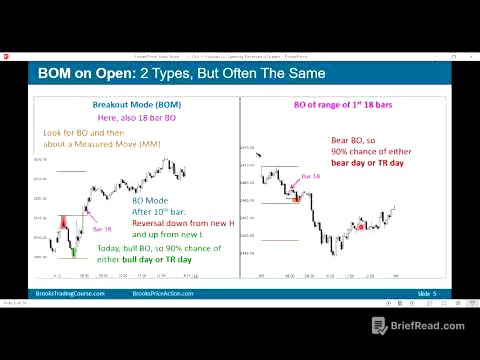TLDR;
This video provides a step-by-step guide on diagnosing and fixing a refrigerator that isn't cooling properly. The key is to systematically check several components: the condenser coils, the fans, the evaporator coil, and the compressor's start relay and capacitor. The video details how to identify a faulty start relay using a multimeter and visual inspection for burn marks or leaks. Ultimately, replacing the start relay resolves the issue, restoring the refrigerator's cooling function.
- Check condenser coils for dust.
- Ensure all fans are working.
- Inspect the evaporator coil for ice buildup.
- Test the compressor's start relay and capacitor.
Intro [0:00]
The video introduces a refrigerator repair scenario where the freezer was not cooling effectively, with temperatures around 50 degrees. The presenter outlines a systematic approach to diagnosing the problem, emphasizing that identifying the faulty component is the most challenging part of the repair. He details the tools needed: a multimeter (or voltmeter) and a quarter-inch socket driver (or a straight screwdriver).
Checking the Coils and Fans [1:12]
The initial step involves checking the condenser coils for dust accumulation, which can impede their ability to dissipate heat. This can be done by either removing the front guard or accessing the coils from the back of the refrigerator. The presenter removed the cardboard cover on the back to access the coils and vacuumed off the dust. Next, ensure that all fans are functioning correctly, including the one blowing over the condenser coil and the one circulating cold air inside the refrigerator. In this case, both fans were working.
Inspecting the Evaporator Coil [2:24]
The third check involves inspecting the evaporator coil inside the freezer. Accessing it requires removing the shelves and the back panel. The evaporator coil, which resembles a radiator, is responsible for transferring cold air. If this coil freezes up, it cannot function correctly. The defroster at the bottom prevents ice buildup. The presenter removed the panel and visually inspected the coil, finding no ice buildup or other issues.
Diagnosing the Compressor [3:28]
The presenter describes the compressor turning on for only five seconds before clicking off, indicating a problem with the components providing power to the compressor. The compressor should run as long as needed to maintain cold air. The presenter identifies the capacitor and start relay as potential culprits. The capacitor provides a boost of energy to start the compressor.
Testing the Capacitor and Start Relay [5:04]
The presenter details how to test the capacitor and start relay. The start relay plugs into the compressor and the capacitor, with power coming in from the top. Upon inspection, the presenter found burn marks and gunk on the start relay, indicating it was shorted out. Although his multimeter couldn't read microfarads, he tested the capacitor by observing whether it slowly took a charge, and it seemed to be working fine.
Using a Multimeter to Check for Continuity [8:09]
The presenter demonstrates how to check the start relay for continuity using a multimeter. He connects the multimeter to different terminals on the relay to test for continuity. The burned and damaged circuit board of the start relay further confirmed that it was the faulty component. The presenter notes the part numbers for both the capacitor and the start relay for easy reference.
Replacing the Start Relay [10:13]
The presenter received the new start relay and proceeds to install it. Despite his wife getting a new refrigerator, he decided to fix the old one anyway. The installation involves plugging in the capacitor and connecting the start relay to the compressor. He reconnects the wires to the compressor, ensuring each plug is securely attached.
Testing the Fixed Refrigerator [12:23]
After plugging in the refrigerator, the compressor starts immediately, indicating the repair was successful. Cold air is blowing from the freezer, confirming that the new start relay fixed the problem. The presenter concludes that ordering just the start relay was the correct decision. He provides links for the parts in the description and reiterates that the key to fixing a refrigerator is accurate diagnosis.
![Refrigerator Not Cooling - How to Fix - What to Check [2020]](https://wm-img.halpindev.com/p-briefread_c-10_b-10/urlb/aHR0cDovL2ltZy55b3V0dWJlLmNvbS92aS9vY09XMkdZeGRURS9tYXhyZXNkZWZhdWx0LmpwZw==.jpg)








